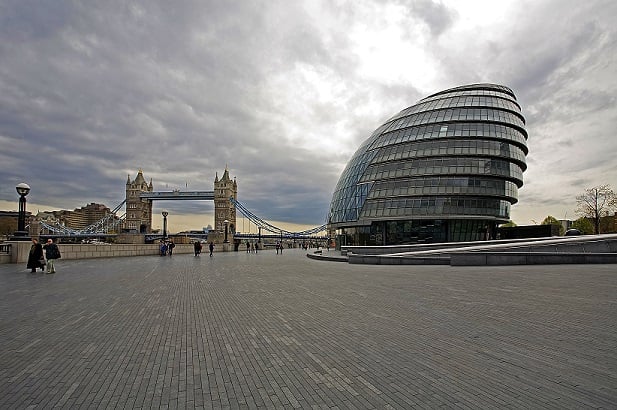
City Hall has applied for a junior electricity supply licence to get it’s Licence Lite initative off the ground, which will purchase low carbon energy from local sources to sell to businesses and public sector bodies.
Sadiq Khan’s efforts to be “the greenest mayor London has ever had” have been bolstered by City Hall’s announcement that it has applied for a licence to supply low carbon electricity, despite no news yet of increased renewable energy generation within the city.
During his election campaign earlier in the year, Khan pledged to set up Energy for Londoners, a not-for-profit company aiming to “take a lead” on renewable energy initiatives across the city. It is intended to increase the use of solar across the city, support community generation schemes and boost low carbon energy in London.
In a statement released earlier today City Hall said that while it worked “on the nuts and bolts of this package of work”, it has already applied for a junior electricity supply licence with Ofgem.
If successful, ‘Licence Lite’ as it is known could be granted by September and will allow the mayor’s office to buy energy from a generator panel including five London boroughs, social housing provider Peabody and energy companies Scottish & Southern Energy (SSE) and Vital Energy to be sold on to the public sector.
The scheme will first look to provide clean energy to Transport for London before expanding to other public sector organisations like the Metropolitan Police and the NHS, followed by the private sector.
The entire package of work is predicted to help London generate more of its energy in a cleaner way and create over £300 million of investment by 2021.
However, this deal resembles a similar scheme under Khan’s predecessor Boris Johnson, who set up the Licence Lite scheme in 2013 and was accused of signing an exclusive deal with big six supplier nPower to provide energy to the capital, bypassing the Licence Lite approach.
The mayor’s office denied this claim, arguing that a major supplier had to be appointed to provide the specialist market services required to operate under the Licence Lite scheme. Speaking in December 2015, a spokesperson said: “When appointed the supplier will play no role in selecting local generators or advising the Greater London Authority who to sell electricity to.”
However, it was confirmed that this supplier would provide back-up quantities of electricity if there is a shortfall between the procured generated capacity and the demand.
To quash these fears, a spokesperson for the mayor’s office told Solar Power Portal this morning that the role of SSE concerns its heat networks business. The utility will be invited to compete with the other panel generators to sell electricity generated locally at combined heat and power plants at a price that is affordable for the Licence Lite business model.
“This is an open and competitive process that is neither secret nor exclusive and SSE will only be awarded an electricity supply contract if their offer is competitive,” she said.
However, the plans to supply clean energy to organisations like TfL are at odds with Khan’s other commitments to see more solar deployed on London’s rooftops, including those of TfL and the Greater London Authority (GLA).
Despite promising to build a solar strategy for the capital to see deployment increase, Khan has yet to publish details on his plan to boost generation capacity in the city, instead seeming to focus on the purchase of renewable energy and potentially rowing back from promises of increased solar deployment.
In response, City Hall claimed that PV panels are still planned for TfL and GLA buildings but would be connected directly to offset demand from an existing energy supplier or Licence Lite. In addition, the spokesperson said that Khan’s solar strategy would work alongside the mayor’s energy supply activity by providing any surplus energy not used by the buildings to Licence Lite to be used to power other public sector buildings through the local distribution network.
She added: “Licence Lite could in fact compliment the Mayor’s solar strategy by making PV more economic where the installation has the potential to generate more than the building requirements.”
Despite this potential, little has been announced so far in Khan’s tenure as Mayor to address London’s extremely low levels of indigenous clean energy generation. The capital was recently ranked as the worst city in England and Wales for its use of renewable energy, with just 0.05% of electricity consumption being met by renewables.
Less than 1% of London households are thought to be equipped with PV panels, thought to be a result of high levels of rental properties and limited roof space. This is the worst proportion of solar roofs in the 20 largest cities in England and Wales by population, with Cardiff, Middlesbrough and Sheffield all ranked higher.

